Coordinated energy-efficient walking assistance for paraplegic patients by using the exoskeleton-walker system
Abstract
Overground walking can be achieved for patients with gait impairments by using the lower limb exoskeleton robots. Since it is a challenge to keep balance for patients with insufficient upper body strength, a robotic walker is necessary to assist with the walking balance. However, since the walking pattern varies over time, controlling the robotic walker to follow the walking of the human-exoskeleton system in coordination is a critical issue. Inappropriate control strategy leads to the unnecessary energy cost of the human-exoskeleton-walker (HEW) system and also results in the bad coordination between the human-exoskeleton system and the robotic walker. In this paper, we proposed a Coordinated Energy-Efficient Control (CEEC) approach for the HEW system, which is based on the extremum seeking control algorithm and the coordinated motion planning strategy. First, the extremum seeking control algorithm is used to find the optimal supporting force of the support joint in real time to maximize the energy efficiency of the human-exoskeleton system. Second, the appropriate reference joint angles for wheels of the robotic walker can be generated by the coordinated motion planning strategy, causing the good coordination between the human-exoskeleton system and the robotic walker. The proposed approach has been tested on the HEW simulation model, and the experimental results indicate that the coordinated energy-efficient walking can be achieved with the proposed approach, which is increased by 60.16% compared to the conventional passive robotic walker.
Keywords
1. INTRODUCTION
Overground walking is necessary and important for patients with gait impairments, which can be implemented using the lower limb exoskeleton robots. Usually, it is hard for patients with insufficient upper body strength to keep balance in the early rehabilitation stages; therefore, a mobile robotic walker is indispensable to assist with the overground walking and gait training.
As shown in Figure 1, the human-exoskeleton-walker (HEW) system is presented. Note that in the following sections, the human-exoskeleton system means a subject wearing the exoskeleton robot, and the HEW system means the human-exoskeleton system with the robotic walker.As shown in Figure 1, the human-exoskeleton system is connected to the mobile robotic walker with a solid cantilever; a support joint is attached to the cantilever for the vertical movement assistance and weight supporting during walking. The robotic walker ensures the stability of the human-exoskeleton system in the coronal plane, validly keeping balance and preventing falls.
Figure 1. The schematic of the human-exoskeleton-walker system. (A) A real exoskeleton robot with a robotic walker; (B) The support joint and the wheels of the robotic walker shall be controlled to follow the walking of the human-exoskeleton system.
For patients with gait impairments, movement disorder can severely disrupt the performance of daily activities and increase the risk of falling. Although various existing walkers are owned by seniors, reported statistics show that 33
In the last decades, several approaches have been studied with the body weight supporting (BWS) system for the energy-efficient walking assistance. Sun et al. proposed a BWS system for the three-dimensional walking in Cartesian space [10], with the series elastic actuation structure to improve the human-robot interaction performance and reduce the energy cost of the human. Wei et al. proposed a surplus force control strategy named active loading compound control for the BWS system, which is used for estimating and improving the loading accuracy [11] and reduces the surplus force and the energy cost. For the mobile robotic walker, Mun et al. proposed a mobile robotic walker for the movement of the pelvis of humans, which can be used to facilitate the over-ground walking without altering the normal gait dynamics[12]. Similar structure has been developed in ref[13]. Chugo et al. developed a robotic walker to assist with the standing motion and simple walking for the aged person in daily life, which estimates the load of the pelvis, knee and ankle joints of the human body, and generate appropriate joint angle for the support joint of the robotic walker[14]. These mobile robotic walkers are developed for the energy cost reduction of humans and are not applicable to the HEW system. For optimization-based approaches, Ding et al. used Bayesian optimization to identify the peak and offset timing of hip extension assistance that minimizes the energy expenditure of walking with a textile-based wearable device, causing reduced metabolic cost by 17.4% ± 3.2
Although the BWS-based approach has demonstrated its energy efficiency, it is mostly used to reduce human's energy cost and is not applicable to the HEW system. In this paper, we focus on the coordinated energy-efficient walking assistance of the HEW system, and the human-in-the-loop optimization for the energy consumption of the human-exoskeleton system is the key research topic. The key points are as follows: First, to find the optimal supporting force of the robotic walker during walking, which can provide the human-exoskeleton system with the body weight support to maximize energy efficiency. Second, to generate appropriate joint angles as the control reference of the wheels to produce a coordinated movement of the robotic walker and the human-exoskeleton system during walking. However, due to the unknown relationship between the energy efficiency and the supporting force, it is difficult to calculate the optimal supporting force during walking. In this paper, a Coordinated Energy-Efficient Control (CEEC) approach is proposed for the HEW system to provide the coordinated movement of the human-exoskeleton system and the robotic walker and maximize the energy efficiency of the HEW system. CEEC consists of a model-free Extremum Seeking Control (ESC) algorithm and a coordinated motion planning approach, which performs real-time seeking of the supporting force and generation of the joint angles of the wheels. The ESC uses a low-frequency perturbation signal to estimate the gradient of the cost function, making it more robust to noisy measurements[18]. The main contributions are summarized as follows:
● The energy efficiency of the HEW system is maximized by the extremum seeking control algorithm in real time to simultaneously tune the supporting force of the support joint. The optimum of the supporting force shifts at different conditions, and our algorithm is suitably fast to track these changes, providing real-time adaptation for different conditions.
● A coordinated motion planning approach is proposed for the HEW system, which performs the coordinated assistance of the robotic walker for the human-exoskeleton system during walking. The appropriate joint angle is generated with the predefined gait trajectory of the exoskeleton, enabling our walker to follow the movement trend of the user; our walker can then automatically move behind the user, providing mobility support.
● The efficiency of the proposed approach has been tested on the HEW simulation models; the experimental results indicate that the energy efficiency was improved by 60.16% compared to the conventional robotic walker and the coordination between the human-exoskeleton system and the robotic walker was significantly improved.
The remainder of the manuscript is organized as follows: In Section 2, the detailed design of the proposed CEEC is presented. In Section 3, the simulation experiments of the proposed approach are showcased; the experimental results and discussions are provided in Section 4. In Section 5, we concluded the paper, and some future works are suggested.
2. METHODS
In this section, the design of the CEEC is presented, including the human-in-the-loop optimization of the supporting force and implementation of the coordinated motion planning approach of the wheels. As shown in Figure 2, the framework of the proposed CEEC approach is presented, which consists of two parts: the supporting force optimization and coordinated motion planning. In the following two subsections, these two parts will be introduced in detail.
Figure 2. The framework of the proposed approach CEEC. COM: Center of Mass; CEEC: Coordinated Energy-Efficient Control.
2.1. The optimization of the supporting force
In this subsection, the real-time optimization of the supporting force is presented, which aims to find the optimal supporting force provided by the support joint of the robotic walker. The structure of the HEW system and the energy cost calculation during walking are outlined in Section 2.1.1, and the implementation of the human-in-the-loop optimization for the supporting force is detailed in Section 2.1.2.
2.1.1. Energy calculation of the HEW system with the supporting force
In this subsection, the energy cost of the human-exoskeleton system is presented, where the energy is determined by the power of the active joints of the exoskeleton. The structure of the HEW system is shown in Figure 3, where the exoskeleton robot includes hip, knee and ankle joints to drive the human-exoskeleton system walking forward. The thighs, calves, and feet of the exoskeleton are interconnected with the corresponding segments of the pilot's lower limbs, ensuring full synchronization between the pilot's lower limb movements and those of the exoskeleton. The supporting force
In this paper, we focus on the movement of the HEW system in the Sagittal plane, and the Center of Mass (COM) of the human-exoskeleton system has a good correspondence in the sagittal plane with the hip joints [19]; therefore, the COM of the human-exoskeleton system is set to the center of two hip joints. The horizontal movement of the COM is solely driven by the exoskeleton support leg, while the vertical movement is influenced by both the support joint and the exoskeleton support leg. Assuming that the ankle joint of the support leg is set as the origin of the Cartesian frame, the COM's position of the human-exoskeleton system can be described when the predefined gait trajectories
where the
where
where
where
where
Based on the Equations (2)-(4), we can find that the torques of the hip and knee joints are decreased as the supporting force
where
2.1.2. Real-time optimization of the supporting force
In this subsection, the real-time optimization of the supporting force, which employs the discrete-time ESC approach, is presented. ESC is a model-free adaptive control method that finds an optimum set-point in order to minimize/maximize an objective function, whose analytical expression might be unknown[20–23]. Kumar et al. proposed a modified structure of the discrete-time ESC by introducing a stepper motor with an integrator[24,25]. In this modified structure, the ESC integration is performed by the motor dynamics itself. Moreover, the stepper motor has the same characteristics as the zero-order holder; it does not have any closed-loop encoder feedback for position control. Instead, it accepts a variation in the motor location as an input command rather than the final motor location. In this paper, we used the variation in the motor location to tune the supporting force of the support joint.
The block diagram of the modified ESC used in this paper is shown in Figure 4, where the workflow of the ESC is as follows. Firstly, a periodic disturbance signal of small amplitude
Assuming that the stepper motor dynamics is modeled as a cascade connection of a zero-order holder and a continuous-time integrator. The zero-order holder holds the sample
and the Taylor series approximation of
where
In the demodulation step,
where
Following standard manipulations[26], the equations of ESC can be updated as follows:
where
Overall, with the proposed real-time optimization approach, the optimal supporting force can be found in real time by walking several steps overground with the HEW system. As a result, the energy cost of the HEW system will be reduced to the minimum value without slipping overground.
2.2. The coordinated motion planning of the robotic walker
The coordinated motion planning is to make the human-exoskeleton system and the robotic walker move coordinately and avoid the "pull" or "push" between them. As shown in Figure 2, the coordinated motion planning is based on the hip and knee joint angles of the exoskeleton robot. As shown in Figures 5 and 6, there are four wheels of the robotic walker, and all wheels rotate around the
As we mentioned in Figure 1, the exoskeleton robot is connected to the robotic walker with a solid cantilever; therefore, the horizontal movement of the robotic walker is the same as the COM of the human-exoskeleton system. Note that if the wheels are passive without any power, there is no active movement of the robotic walker, and the human-exoskeleton system has to pull or push the robotic walker while walking overground. If the wheels are actuated with the DC motors, they can drive the robotic walker to follow the movement of the human-exoskeleton system and avoid the movement conflict between the human-exoskeleton system and the robotic walker. Therefore, the question is how to control these wheels to drive the robotic walker to coordinately follow the movement of the human-exoskeleton system.
Based on Equation (1), the movement of the COM during walking can be calculated with the joint angles of the exoskeleton robot. Additionally, the horizontal movement of COM can be discretized with a constant unit time
where
where
where
3. EXPERIMENTS
In this section, simulation experiments are conducted with the constructed HEW simulation models in the robot simulation platform CoppeliaSim (https://www.coppeliarobotics.com). The simulation model is shown in Figure 5; the model retains the same configuration of degrees of freedom illustrated in Figure 3, where the wheels are controlled with the PID position controllers and the support joint is controlled in the torque mode to support the weight of the human-exoskeleton system. The torques and the trajectories of the COM's movement can be obtained, and the power and the energy cost of the HEW system can be calculated, with the proposed CEEC approach; the optimal supporting force can be found after several walking steps. In addition to this, the tracking performance of the COM's movement can be used to evaluate the coordination between the human-exoskeleton system and the robotic walker.
3.1. Experimental setup
To evaluate the performance of the proposed CEEC approach, several experiments were designed in the simulation experiments. Firstly, the hip and knee joint angles used in the experiment are sampled from the healthy subject, as shown in Figure 7, where the joint angles in swing and stance phases are for the swing leg and the support leg, respectively. The mass distribution of the human-exoskeleton system (torso, thigh, shank, and foot) follows average human anthropometry [27], as shown in Table 1, and the length of the thigh and shank is set to 0.45 m, which is similar to the subject with the body height of 1.75 m.
Parameters for human and exoskeleton simulation models
| Segment part | Mass (kg) | Length (m) | ||
| Human | Exoskeleton | Human-exoskeleton | ||
| Upper body | 42 | 5 | ||
| Thigh | 5.7 | 4 | 0.45 | |
| Shank | 2.5 | 4 | 0.45 | |
| Foot | 0.8 | 0.5 | 0.28 | |
| Total | 60 | 22 | ||
Overall, the total mass of the human subject, the exoskeleton, the robotic walker, and other parameters for the simulation experiments are shown in Table 2. Note that the parameters for the motors in hip and knee joints refer to the manual of the DC motors used in our exoskeleton robots shown in Figure 1.
Other parameters for simulation and energy cost computation
| Parameters | Description | Value |
| Base frame mass | 40 kg | |
| Human subject | 60 kg | |
| Exoskeleton mass | 22 kg | |
| Coefficient of friction | 0.71 | |
| Resistance of the walker | 10 N | |
| Gravitational acceleration | 10 m/s2 | |
| Reduction ratio of exoskeleton reducers | 60 | |
| Torque constant of exoskeleton motors | 0.162 Nm/A | |
| Motor resistance of exoskeleton motors | 0.23 Ω | |
| The radius of the wheels | 0.038 m |
To evaluate the proposed CEEC approach and compare it with others, four experiments were designed, each assigned a distinct name.
● The first one is the "baseline"; there was no active assistance of the robotic walker, i.e., the human-exoskeleton system had to pull the robotic walker forward during walking.
● The second one is the Coordinated Motion Planning ("CMP"); there was only the active assistance from the wheels with the generated coordinated motion planning, i.e., the wheels were controlled with the reference joint angles generated in Section 2.2. In addition, there was no supporting force from the support joint.
● The third one is the "ESC"; there was only the supporting force from the support joint under the ESC strategy, with no active assistance from the wheels.
● The last one is the "CEEC"; there was active assistance from both the support joint and wheels; the supporting force was optimized with the ESC strategy; the wheels were controlled with the reference joint angles in Section 2.2.
To evaluate the adaption of the proposed CEEC approach for different subjects, three subject simulation models with various masses are employed in the experiment [Table 3]. Note that the ESC strategy is an online iterative algorithm, and the initial value of the supporting force should be set at the beginning of the experiment. Therefore, two distinct initial supporting forces were given [Table 3].
Different scenarios for validating the CEEC
| Index | Mass of the subject (kg) | Initial supporting force (N) |
| CEEC: Coordinated Energy-Efficient Control. | ||
| A1 | 40 | 300 |
| A2 | 60 | 300 |
| A3 | 80 | 300 |
| B1 | 40 | 400 |
| B2 | 60 | 400 |
| B3 | 80 | 400 |
For each trial of the experiment, seventeen steps (the first step and eight gait cycles) were conducted to test the efficiency of the proposed approach. Note that the first is a special step from the standing upright posture to walking; therefore, the control strategy only works in the last sixteen steps. The sampling rate is 20 Hz, and the gait cycle is two seconds with two steps. The TCoT was computed with the sampled torque of the support leg's hip and knee joints after each gait cycle. The parameters of ESC were selected as follows: a = 1.6, b = 0.8,
3.2. Simulation experiments recording
The snapshots of the four experiments (baseline, CMP, ESC, CEEC) are shown in Figure 8, where each row corresponds to one of the four different experiments, i.e., baseline, CMP, ESC and CEEC, respectively. It is significant that with diverse control strategies, the COM's tracking performances vary.
Figure 8. The comparison of walking experiments with different control strategies. CMP: Coordinated Motion Planning; ESC: Extremum Seeking Control; CEEC: Coordinated Energy-Efficient Control.
The snapshots of the experiments with three different subjects and the CEEC control approach are shown in Figure 9. Since the CEEC is adaptive to various scenarios, the walking performance is similar for subjects with varying masses.
For a more detailed presentation of the whole walking experiment, please refer to the Supplementary Video.
4. RESULTS AND DISCUSSION
4.1. Experimental results for the comparison with the COM's trajectory tracking and the energy cost
First of all, the comparison of COM's trajectories tracking performance with baseline, CMP, ESC and CEEC during the whole walking experiments are shown in Figure 10. Note that the HEW system is moving in the Sagittal plane; therefore, only the
Figure 10. The comparison of COM trajectories tracking performance with different control strategies. (1) Reference: the reference COM trajectories; (2) Baseline: the human-exoskeleton walks without any assistance of the robotic walker; (3) CMP: the HEW system walks with only the active wheel movements; (4) ESC: the HEW system walks with only the supporting force under the ESC strategy; (5) CEEC: the HEW system walks with the proposed coordinated energy-efficient control approach. CMP: Coordinated Motion Planning; ESC: Extremum Seeking Control; CEEC: Coordinated Energy-Efficient Control; COM: Center of Mass; HEW: human-exoskeleton-walker.
To compare the trajectory tracking of four cases, the mean squared error (MSE) of four cases relative to the reference COM trajectories was calculated as:
The calculated MSE of four cases was shown in Table 4.
The MSE of four cases
| Cases | Description | MSE |
| MSE: Mean squared error; CMP: Coordinated Motion Planning; ESC: Extremum Seeking Control; CEEC: Coordinated Energy-Efficient Control. | ||
| Baseline | With no supporting force and no assistance from wheels | 4.0841 |
| CMP | With only active assistance from wheels and no supporting force | 0.0019 |
| ESC | With only supporting force and no assistance from wheels | 1.4496 |
| CEEC | With both supporting force and assistance from wheels | 0.0027 |
From the trajectory tracking comparison, we can find that in the baseline case, due to no active assistance from the robotic walker, the human-exoskeleton system has to pull the robotic walker forward during walking, the COM's trajectory tracking is bad, and the final position of the COM is far away from the desired position. In the CMP case, since there is active assistance of the wheels with the coordinated motion generated with the reference COM trajectory, the tracking performance of the COM is good. For the ESC and CEEC cases, since a supporting force exists, the COM's trajectory tracking is better than the baseline, and especially for the CEEC case, the COM's trajectory tracking is better than the ESC case. Note that in the first several steps, the supporting force is not optimal, and the ESC algorithm is tuning to find the optimal supporting force, which results in a bad performance. However, after several steps of optimization, the optimal supporting force is found, and the COM's trajectory tracking is better. This is the reason why the MSE of CEEC is a little bigger than the MSE of CMP.
Above all, for the COM's trajectory tracking, CEEC is better than the ESC and baseline but worse than the CMP. Now, let us see the energy cost during walking with these different strategies [Figure 11]. From the bars presented in Figure 11, we can see that in the baseline case, the energy cost is much higher than in any other method. In the CMP case, the energy cost is always similar during the walking. In ESC and CEEC cases, the energy cost is very high at the beginning of the walking and decreases after several steps; this is because, at the first several steps, the ESC algorithm needs to iteratively update the supporting force and find the optimal one, which leads to a bad walking performance and high energy cost. After several steps, the energy cost is reduced, and the CEEC is better than the ESC; this is because the CEEC not only optimizes the supporting force but also provides horizontal coordinated walking assistance by wheels.
Figure 11. The comparison of energy cost with different control strategies. CMP: Coordinated Motion Planning; ESC: Extremum Seeking Control; CEEC: Coordinated Energy-Efficient Control.
Overall, considering the COM's trajectory tracking performance and the energy cost, the CEEC is the best approach for the HEW system to finish coordinated energy-efficient overground walking.
4.2. Experimental results for the comparison of subjects with different masses
To validate the adaptive capacity of the CEEC algorithm in various scenarios, subjects with varying masses are employed and different initial support forces for CEEC are given [Table 3]. As mentioned before, there are eight gait cycles of each experiment; the hip and knee joint torques of the support leg were recorded with the sampling frequency of 20 Hz for the CEEC algorithm.
The variation of the supporting force for different subjects and initial supporting force settings are shown in Figure 12, and all support forces will be iteratively updated and converged to the optimal one after several steps of walking. Note that for distinct subjects, the final optimal support forces vary and mainly depend on the masses of the subject; this is because a bigger supporting force is needed for a heavier subject. So for the heaviest subject (A3 and B3) with the mass of 80 kg, the required supporting force is much bigger than the lightest subject (A1 and B1) with the mass of 40 kg.
The variation of the TCoT for different subjects and initial supporting force settings are shown in Figure 13. The TCoT can be calculated with the Equations (4)-(6), where the joint torques for during the walking can be found in Figure 14. Then, the support leg's energy consumption in one gait cycle can be obtained by integrating the power of hip and knee joints over the gait cycle; the stepping length is also obtained. Similar to the variation of the supporting force, the TCoT for diverse subjects could converge to an almost constant value after three gait cycles. Note that for the same subject, the TCoT converged to a closed value after several steps; this is because the CEEC is an iterative updated algorithm and will tune the supporting force online; even with different initial supporting force settings, the final optimal supporting force only depends on the subject's masses in these experiments.
The final converged supporting force and the improvement of the energy efficiency are shown in Table 5, where the TCoT in the baseline case was chosen to be compared with the CEEC case. To confirm that these values are optimal, the three control groups in Table 5 were selected to be compared with the optimal supporting force. In the experiments, the different supporting forces were set for the support joint, whose values are selected in the interval with the converged supporting force as the midpoint. The selected values of constant supporting force and the comparison of the TCoT with the converged one are shown in Table 6. From Table 6, when the converged supporting force was increased or decreased, the TCoT always increased. Looking at Equations (2)-(4), it is intuitive that the elevation of the supporting force leads to the reduction of the energy cost. However, if the supporting force is bigger than the optimal one, it may cause severe slippage in the human-exoskeleton system. Despite the reduced energy cost, the TCoT also rises. When the supporting force is smaller than the optimal one, the energy cost increases without slippage, similarly causing the TCoT to increase. As a result, the converged supporting forces of the three control groups are optimal.
The optimal supporting force and the improvement of the energy efficiency with the CEEC
| Index | Converged supporting force (N) | Converged TCoT (J/m) | TCoT of baseline (J/m) | TCoT reduction |
| CEEC: Coordinated Energy-Efficient Control. | ||||
| A1 & B1 | 487 | 130 | 309.4 | 58% |
| A2 & B2 | 579 | 181 | 454.7 | 60.90% |
| A3 & B3 | 682 | 245 | 638.7 | 61.60% |
The comparison of the TCoT with different supporting forces
| Index | Supporting force (N) | TCoT(J/m) | TCoT elevation |
| TCoT: Total cost of transport. | |||
| 687 | 161 | 23.80% | |
| 587 | 148 | 13.80% | |
| A1 & B1 | 487 | 130 | Baseline |
| 387 | 165 | 26.90% | |
| 287 | 250 | 92.30% | |
| 779 | 210 | 16% | |
| 679 | 196 | 8.29% | |
| A2 & B2 | 579 | 181 | Baseline |
| 479 | 231 | 27.62% | |
| 379 | 263 | 45.30% | |
| 882 | 290 | 18.37% | |
| 782 | 263 | 7.35% | |
| A3 & B3 | 682 | 245 | Baseline |
| 582 | 309 | 26.12% | |
| 482 | 353 | 44.08% | |
The optimal supporting force in the table is the average final converged value in Figure 12, and the optimal TCoT is the average final converged value in Figure 13. Compared with the baseline, the CEEC reduced the TCoT by 58%, 60.9% and 61.6%, respectively. In other words, the average improvement of the energy efficiency can be calculated with these three values, i.e., 60.16%.
The variations of the hip and knee joint torques in the experiments are shown in Figure 14. With the iterative update of CEEC, the peak joint torques of both hip and knee joints in all scenarios are reduced significantly after several steps of walking with increasing supporting force, which means the CEEC is an online real-time optimization approach for the HEW system. Note that for different subjects and initial settings of the supporting force, the joint torques can be online optimized, and for subjects with varying masses, the required joint torques are distinct. For example, in Figure 14, the red solid curve with a lighter subject mass is smaller than the black dashed curve with a heavier subject mass.
Overall, the experimental results indicate the CEEC approach proposed in this paper can realize the coordinated energy-efficient walking assistance for the HEW system, resulting in a significant improvement. However, If you are only concerned with the COM tracking effect, CMP is the better approach. Methods can be chosen according to the actual situation.
5. CONCLUSIONS AND FUTURE WORK
In this paper, a CEEC approach is proposed for the HEW system, which is based on the discrete-time extremum seeking control and the coordinated motion planning strategies. The proposed approach could automatically tune the supporting force in real time, and adaptive to different subjects, and drive the robotic walker to follow the movement of the COM. Optimal supporting force and coordinated joint angles can be generated with the proposed approach for the robotic walker to assist the human-exoskeleton systems in implementing high energy-efficient walking. In the future, the efficiency of the method should be tested in more different scenarios, such as with varied gait patterns, and applied to the real HEW systems.
DECLARATIONS
Authors' contributions
Conception and design of the study and performed data analysis: Yang C, Zou C, Peng Z
Manuscript writing: Yang C, Zou C
Materials support and experiments set up: Zhang X, Cheng H
Performed data acquisition and analysis of the study: Zhang X, Zhang L
Manuscript review and correction: Huang R, Cheng H
Availability of data and materials
Not applicable.
Financial support and sponsorship
This work was supported by the National Key Research and Development Program of China under Grant 2018AAA0102504, the National Natural Science Foundation of China (No. 62203089, No. 62003073, No. 62103084, No. 62303092), the Project funded by China Postdoctoral Science Foundation under Grant 2021M700695, the Sichuan Science and Technology Program (2022NSFSC0890, 2021YFS0383, 2023YFG0024, 2022YFS0570, 2022NSFSC0865), and the Fundamental Research Funds for the Central Universities (ZYGX2022YGRH003, ZYGX2021YGLH003).
Conflicts of interest
All authors declared that there are no conflicts of interest.
Ethical approval and consent to participate
Not applicable.
Consent for publication
Not applicable.
Copyright
© The Author(s) 2024.
REFERENCES
1. Luz C, Bush T, Shen X. Do canes or walkers make any difference? Nonuse and fall injuries. Gerontologist 2015;57:211-8.
2. Bertrand K, Raymond MH, Miller WC, Martin Ginis KA, Demers L. Walking aids for enabling activity and participation: a systematic review. Am J Phys Med Rehabil 2017;96:894-903.
3. Di P, Hasegawa Y, Nakagawa S, et al. Fall detection and prevention control using walking-aid cane robot. IEEE/ASME Trans Mechatron 2016;21:625-37.
4. Xu W, Huang J, Cheng L. A novel coordinated motion fusion-based walking-aid robot system. Sensors 2018;18:2761.
5. Moustris GP, Tzafestas CS. Intention-based front-following control for an intelligent robotic rollator in indoor environments. In: 2016 IEEE Symposium Series on Computational Intelligence (SSCI); 2016 Dec 6-9; Athens, Greece. IEEE; 2016. pp. 1-7.
6. Tefertiller C, Hays K, Jones J, et al. Initial outcomes from a multicenter study utilizing the indego powered exoskeleton in spinal cord injury. Top Spinal Cord Inj Rehabil 2018;24:78-85.
7. Read E, Woolsey C, McGibbon CA, O'Connell C. Physiotherapists' experiences using the Ekso bionic exoskeleton with patients in a neurological rehabilitation hospital: a qualitative study. Rehabil Res Pract 2020;2020:2939573.
8. Esquenazi A, Talaty M, Packel A, Saulino M. The ReWalk powered exoskeleton to restore ambulatory function to individuals with thoracic-level motor-complete spinal cord injury. Am J Phys Med Rehabil 2012;91:911-21.
9. Koljonen PA, Virk AS, Jeong Y, et al. Outcomes of a multicenter safety and efficacy study of the SuitX phoenix powered exoskeleton for ambulation by patients with spinal cord injury. Front Neurol 2021;12:689751.
10. Sun Y, Lei Y, Zou W, Li J, Yu N. Real-time force control of an SEA-based body weight support unit with the 2-DOF control structure. In: 2018 IEEE International Conference on Real-time Computing and Robotics (RCAR); 2018 Aug 1-5; Kandima, Maldives. IEEE; 2018. pp. 390-94.
11. Wei C, Qin T, Meng X, Qiu J, Wang Y, Li B. Surplus force control strategy of an active body-weight support training system. In: Liu XJ, Nie Z, Yu J, Xie F, Song R, editors. Intelligent Robotics and Applications. ICIRA 2021. Lecture Notes in Computer Science, vol 13014. Cham: Springer; 2021. pp. 153-62.
12. Mun KR, Guo Z, Yu H. Development and evaluation of a novel overground robotic walker for pelvic motion support. In: 2015 IEEE International Conference on Rehabilitation Robotics (ICORR); 2015 Aug 11-14; Singapore. IEEE; 2015. pp. 95-100.
13. Song Z, Chen W, Wang W, Zhang G. Dynamic modeling and simulation of a body weight support system. J Healthc Eng 2020;2020:2802574.
14. Chugo D, Morita Y, Yokota S, Sakaida Y, Takase K. A robotic walker for standing assistance with realtime estimation of a patient's load. In: 2012 12th IEEE international workshop on advanced motion control (AMC); 2012 Mar 25-27; Sarajevo, Bosnia and Herzegovina. IEEE; 2012. pp. 1-6.
15. Ding Y, Kim M, Kuindersma S, Walsh CJ. Human-in-the-loop optimization of hip assistance with a soft exosuit during walking. Sci Robot 2018;3:eaar5438.
16. Song S, Collins SH. Optimizing exoskeleton assistance for faster self-selected walking. IEEE Trans Neural Syst Rehabil Eng 2021;29:786-95.
17. Lee H, Rosen J. Lower limb exoskeleton - energy optimization of bipedal walking with energy recycling - modeling and simulation. IEEE Robot Autom Lett 2023;8:1579-86.
18. Stanković MS, Stipanović DM. Extremum seeking under stochastic noise and applications to mobile sensors. Automatica 2010;46:1243-51.
19. Xi R, Zhu Z, Du F, Yang M, Wang X, Wu Q. Design concept of the quasi-passive energy-efficient power-assisted lower-limb exoskeleton based on the theory of passive dynamic walking. In: 2016 23rd International Conference on Mechatronics and Machine Vision in Practice (M2VIP); 2016 Nov 28-30; 2016. Nanjing, China. IEEE; 2016. pp. 1-5.
20. Kumar S, Mohammadi A, Quintero D, Rezazadeh S, Gans N, Gregg RD. Extremum seeking control for model-free auto-tuning of powered prosthetic legs. IEEE Trans Control Syst Technol 2019;28:2120-35.
21. Krstic M, Wang HH. Stability of extremum seeking feedback for general nonlinear dynamic systems. Automatica 2000;36:595-602.
22. Ariyur KB, Krstic M. Real-time optimization by extremum-seeking control. John Wiley & Sons; 2003.
23. Kumar S, Mohammadi A, Gans N, Gregg RD. Automatic tuning of virtual constraint-based control algorithms for powered knee-ankle prostheses. In: 2017 IEEE Conference on Control Technology and Applications (CCTA); 2017 Aug 27-30; Maui, HI, USA. IEEE; 2017. pp. 812-18.
24. Kumar S, Zwall MR, Bolívar-Nieto EA, Gregg RD, Gans N. Extremum seeking control for stiffness auto-tuning of a quasi-passive ankle exoskeleton. IEEE Robot Autom Lett 2020;5:4604-11.
25. Morar A. Stepper motor model for dynamic simulation. Act Electr 2003;44: 117-22. Available from: https://ie.utcluj.ro/files/acta/2003/Number%202/Paper08_Morar.pdf. [Last accessed on 6 March 2024].
26. Choi JY, Krstic M, Ariyur KB, Lee JS. Extremum seeking control for discrete-time systems. IEEE Trans Autom Control 2002;47:318-23.
27. Clauser CE, Mc Conville JT, Young JW. Weight, volume, and center of mass of segments of the human body. 1969. Available from: https://ntrs.nasa.gov/api/citations/19700027497/downloads/19700027497.pdf. [Last accessed on 6 March 2024].
Cite This Article
Export citation file: BibTeX | RIS
OAE Style
Yang C, Zhang X, Zhang L, Zou C, Peng Z, Huang R, Cheng H. Coordinated energy-efficient walking assistance for paraplegic patients by using the exoskeleton-walker system. Intell Robot 2024;4(1):107-24. http://dx.doi.org/10.20517/ir.2024.07
AMA Style
Yang C, Zhang X, Zhang L, Zou C, Peng Z, Huang R, Cheng H. Coordinated energy-efficient walking assistance for paraplegic patients by using the exoskeleton-walker system. Intelligence & Robotics. 2024; 4(1): 107-24. http://dx.doi.org/10.20517/ir.2024.07
Chicago/Turabian Style
Yang, Chen, Xinhao Zhang, Long Zhang, Chaobin Zou, Zhinan Peng, Rui Huang, Hong Cheng. 2024. "Coordinated energy-efficient walking assistance for paraplegic patients by using the exoskeleton-walker system" Intelligence & Robotics. 4, no.1: 107-24. http://dx.doi.org/10.20517/ir.2024.07
ACS Style
Yang, C.; Zhang X.; Zhang L.; Zou C.; Peng Z.; Huang R.; Cheng H. Coordinated energy-efficient walking assistance for paraplegic patients by using the exoskeleton-walker system. Intell. Robot. 2024, 4, 107-24. http://dx.doi.org/10.20517/ir.2024.07
About This Article
Special Issue
Copyright
Data & Comments
Data

 Cite This Article 6 clicks
Cite This Article 6 clicks


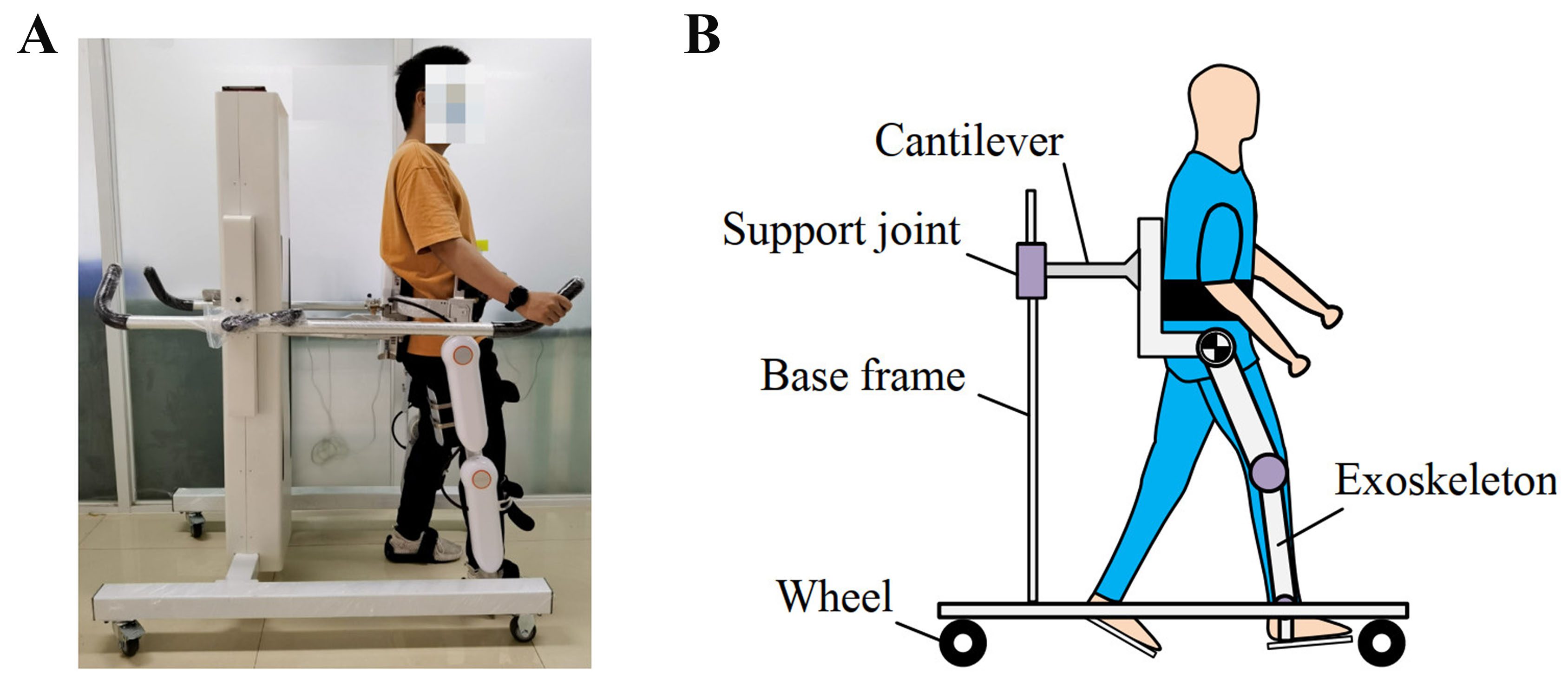

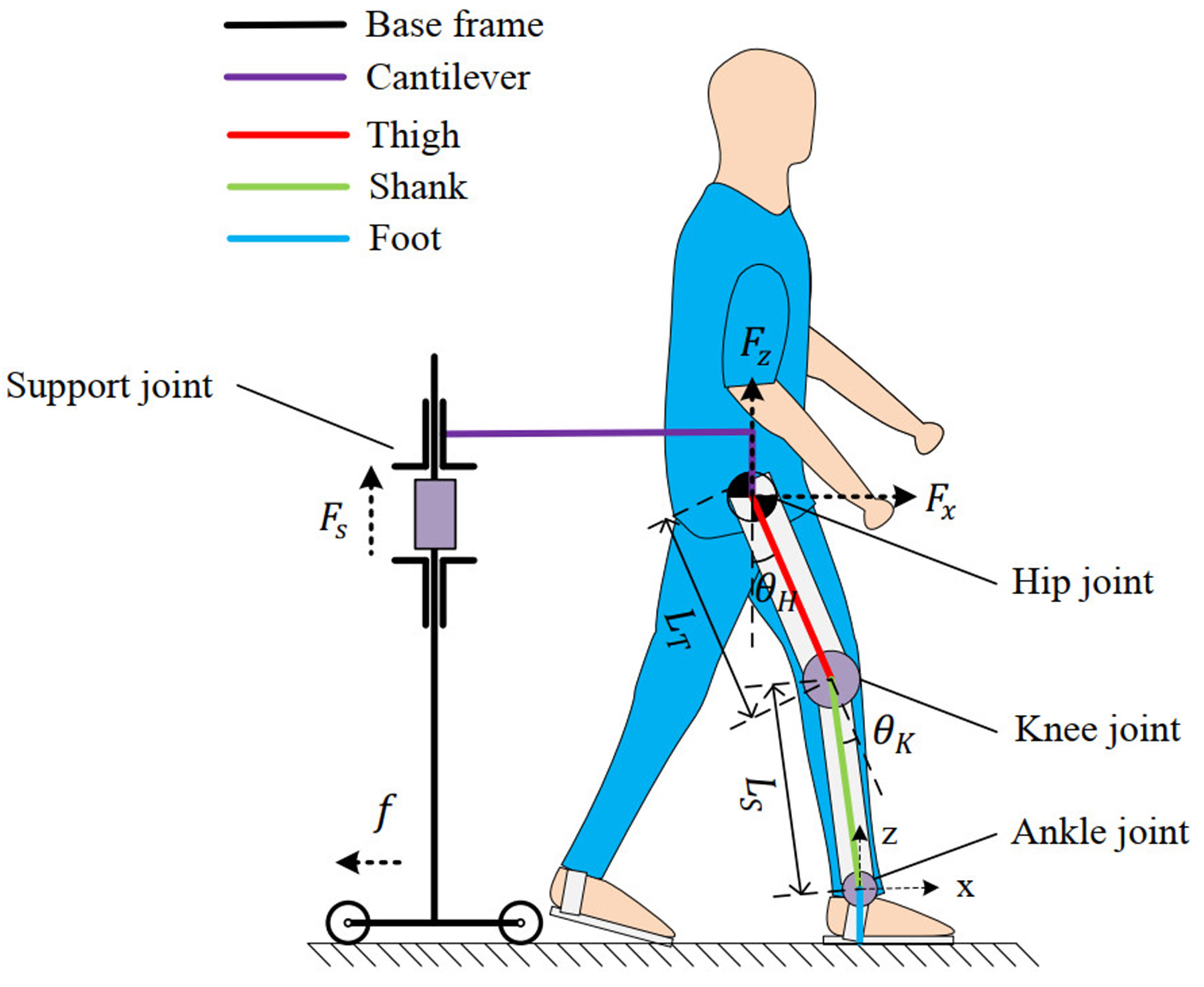
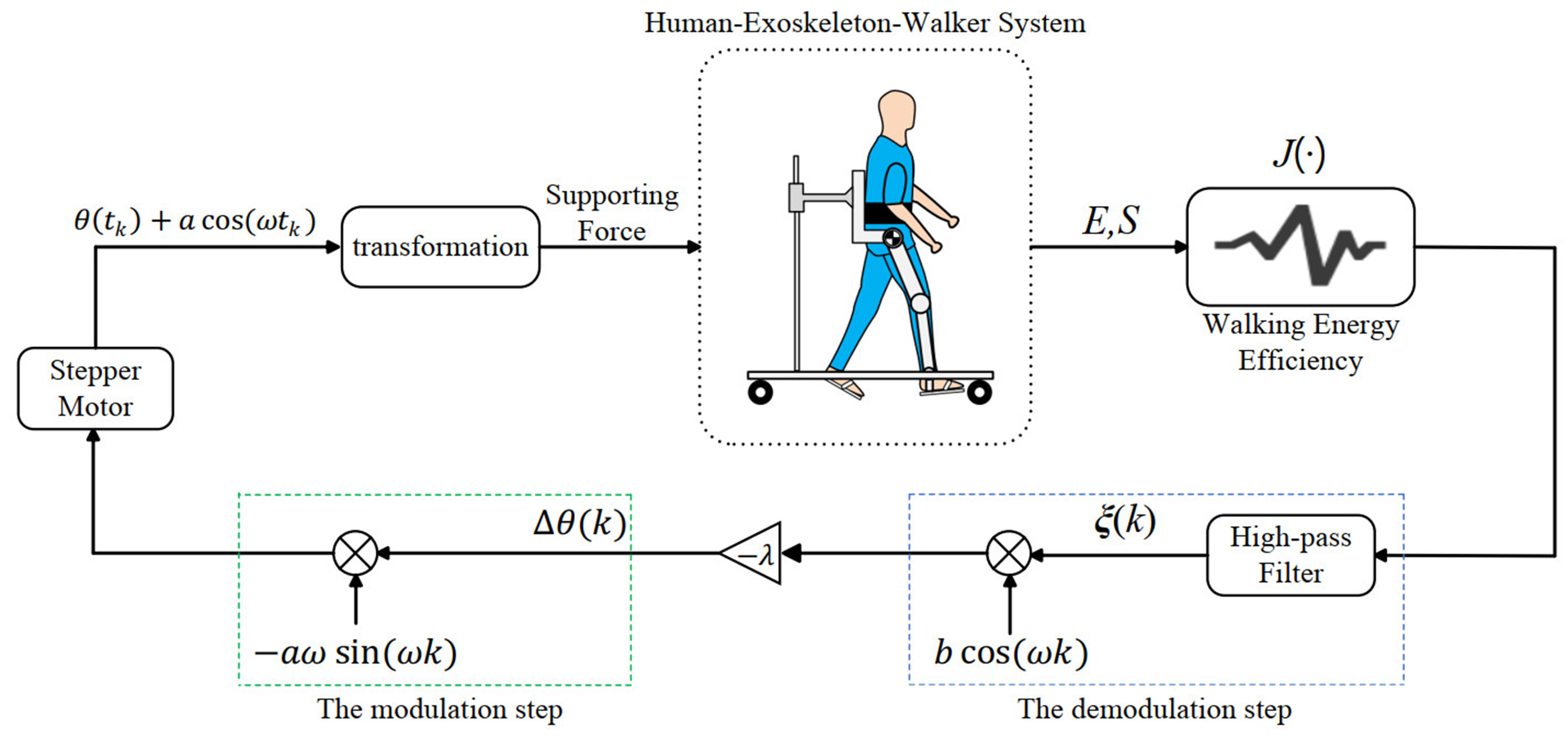





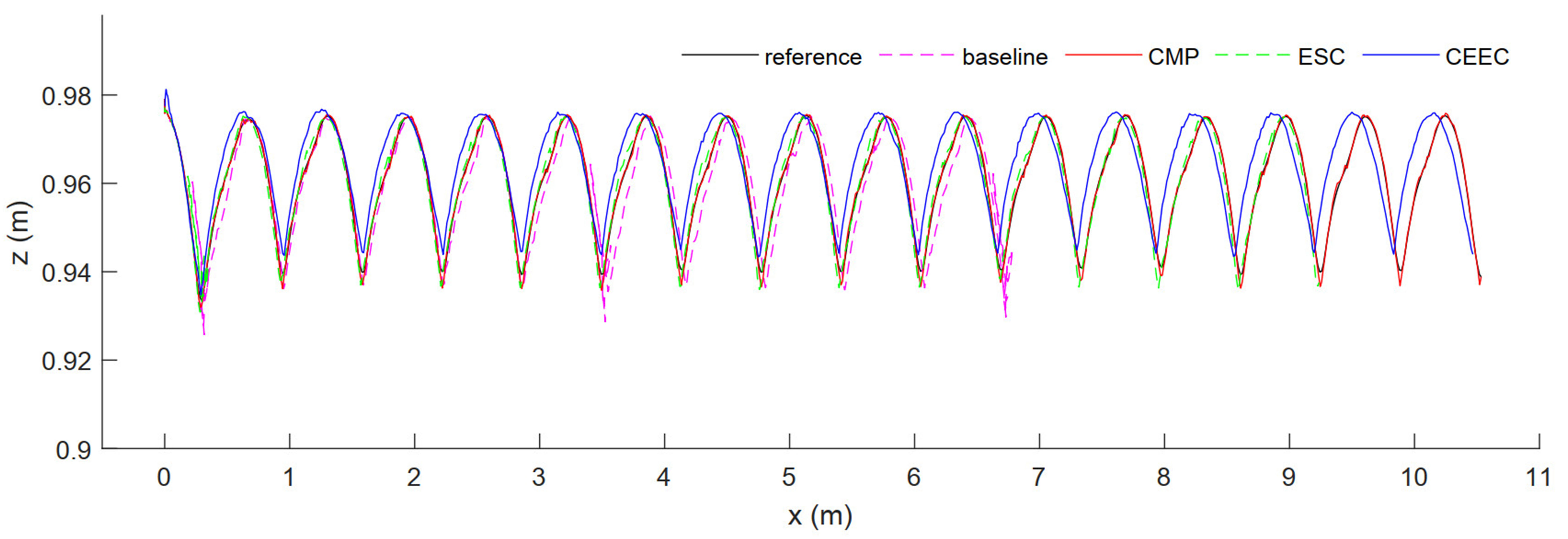

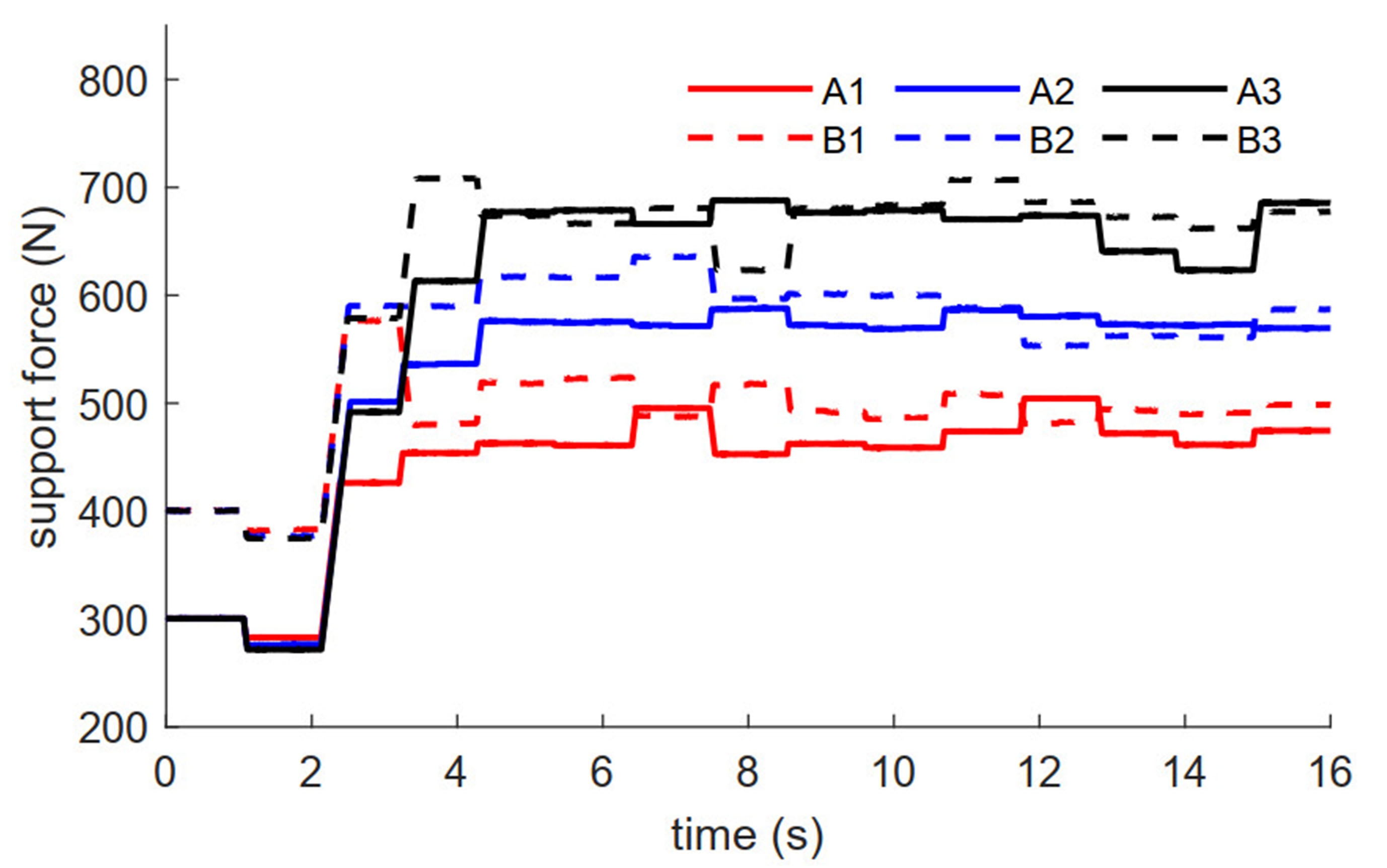
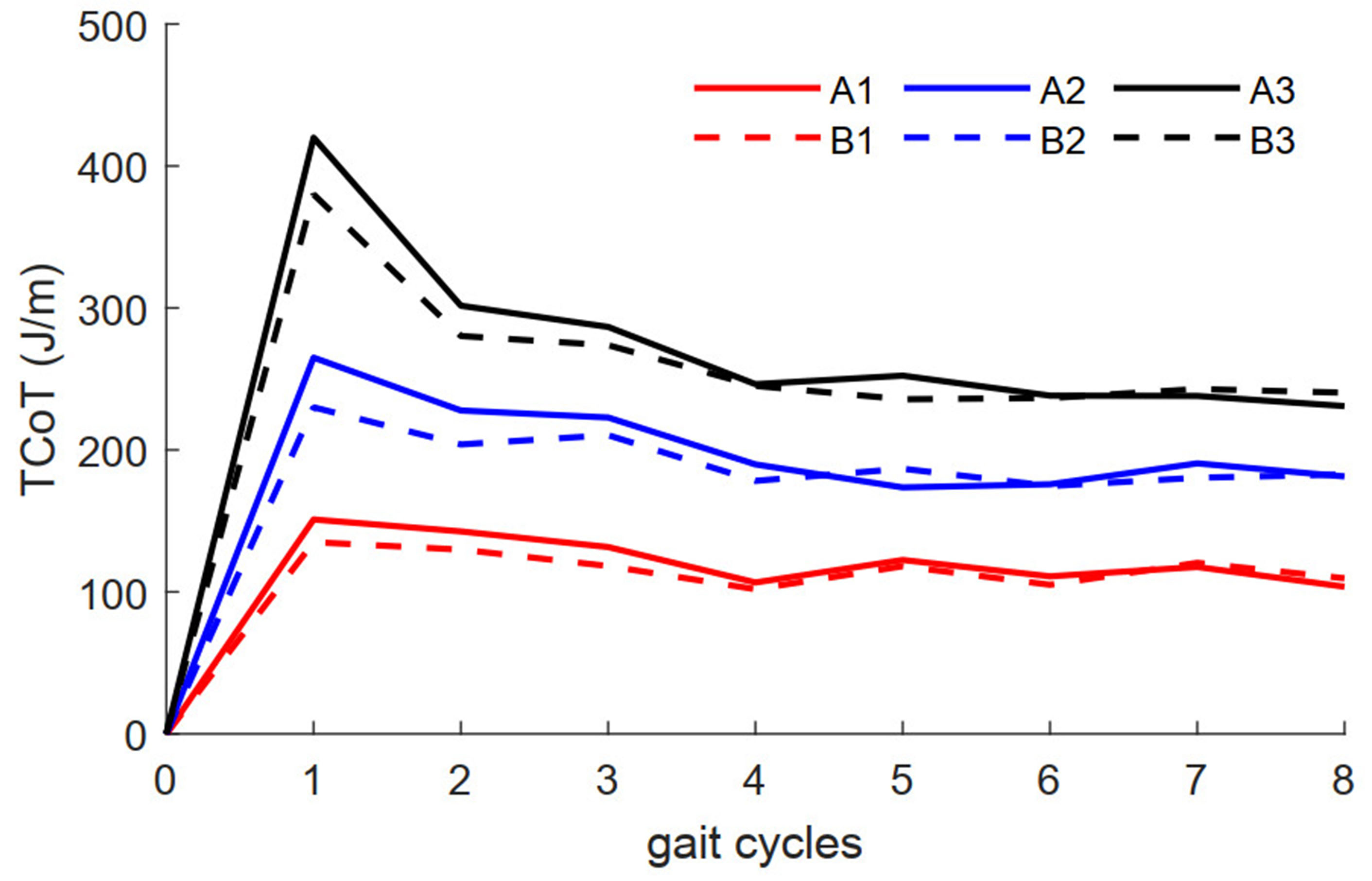
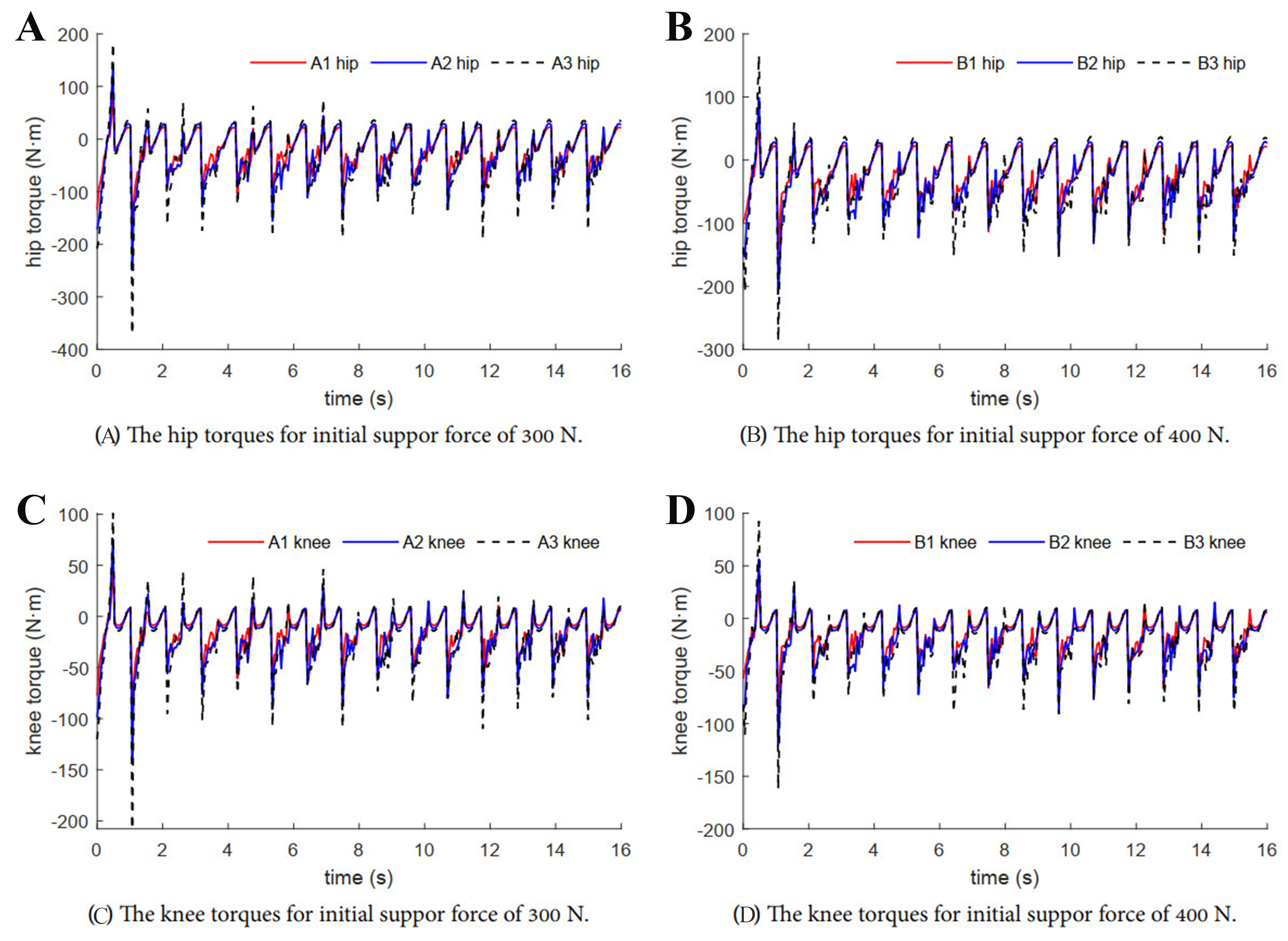

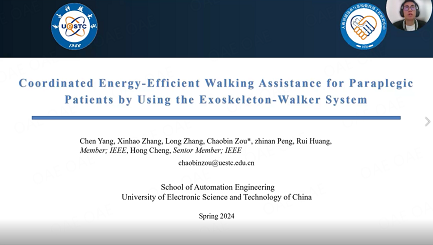








Comments
Comments must be written in English. Spam, offensive content, impersonation, and private information will not be permitted. If any comment is reported and identified as inappropriate content by OAE staff, the comment will be removed without notice. If you have any queries or need any help, please contact us at support@oaepublish.com.